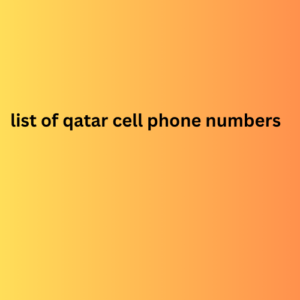Traffic source targeting: display different lead gen forms to users coming from different channels/campaigns.
Intent-based lead capture: display your forms only for users performing high-intent actions (e.g. dwelling on pricing pages or comparing features).
2. Lead nurturing
For SaaS companies, automation is key to nurturing leads list of qatar cell phone numbers throughout the customer lifecycle. Send timely follow-ups after key touch points. For example, you can automate a campaign after a lead fills out a form or attends a webinar.
Drip marketing is part of lead nurturing. customers about your SaaS product's value. From there, address their pain points and gradually encourage them to buy.
Since SaaS often has a longer buying cycle, drip email campaigns hold a huge potential. This is thanks to automation’s ability to send personalized, timely messages.
3. Customer onboarding and retention
SaaS marketing automation is key to onboarding new customers. Once someone signs up for your services, automate a welcome email.
From there, guide customers through an onboarding email sequence. Teach customers how to get the most out of your products. Send personalized tips based on individual preferences or behavior. You can even automate emails when customers reach different milestones.

As you learn more about your customers, try automating product recommendations. That way, you’ll never miss out on a cross- or upselling opportunity.
This will help you reduce churn and keep customers excited about your brand long after they sign up.
4. Performance tracking and analytics
Tracking campaigns and analyzing performance metrics can be time consuming. But imagine having all your data neatly organized, analyzed, and presented to you in an easy-to-read format.
SaaS marketing automation tools help you gain valuable insights without lifting a finger. They can also be used for customer segmentation and lead scoring. You don’t have to analyze real-time data yourself to see which customers are likely to convert.
